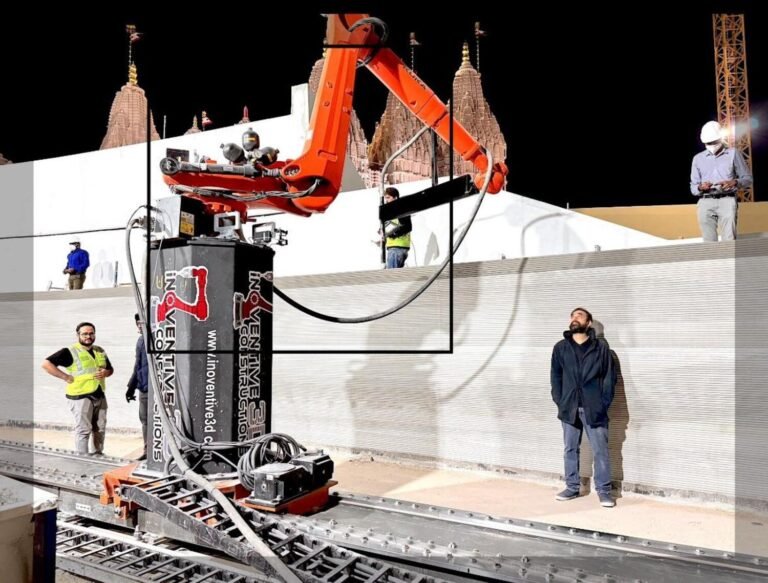The 47-metre Wall of Harmony at the entrance of the BAPS Hindu temple, a gift from the Dawoodi Bohra Muslim community, stands as a testament to unity and innovation. Constructed exclusively during the evenings with specialized concrete over 110 hours, this iconic structure was created by a UAE-based company using advanced 3D printing technology.
Months before the temple’s opening, the high priest Brahmaviharidas Swami approached Inoventive 3D Solutions with the concept of the Wall of Harmony. Mufadal Ali, founder of Inoventive 3D Solutions, recalled, “He explained how it would be placed at the entrance of the temple, reflecting different landmarks and paying homage to the Middle East. It was a last-minute project with a very complex design.” Initially, Mufadal and his team thought the wall would be five meters long. “In 3D printing, a four or five-meter wall is considered quite large,” he said. However, upon visiting the site, they realized the structure would be nearly 50 meters long.
The Wall of Harmony, featuring the word ‘Harmony’ in various languages and adorned with metal cut-outs of global landmarks, became a highlight of the temple. It symbolized unity, with Indian Prime Minister Narendra Modi posing in front of it alongside community leaders.
Most Challenging Project
This project was one of the most challenging for Mufadal’s team. “Once we understood the scope of the design, we worked tirelessly to make it a reality,” he said. They explored several options, including printing with different materials and assembling the wall in parts, but ultimately decided to print the wall on-site in concrete.
Despite settling on a solution, numerous challenges remained. “Since it was a last-minute project, there was a lot of construction going on at the temple,” Mufadal explained. “We could only print in the evenings when everything else was quiet and continued through the night until sunrise.”
Finding the right concrete mix was another hurdle. “Traditional concrete requires slow drying with water,” he said. “We needed a mix that dried quickly and could withstand the UAE’s summer heat of 50℃.” The company worked with a local manufacturer to create a special concrete mix. “If you look at the printing video, you’ll see how we printed the wall in layers,” Mufadal noted. “The top layers are wet, but within 20 to 30 minutes, the concrete dries.”
Future Projects
Mufadal sees a bright future for 3D printing. “We’re awaiting approvals from Dubai Municipality for a futuristic marine industry project,” he said. “We’re also working on printing a G+1 villa, stables for horses, and a chalet for a hotel chain.”
Initially, the company’s primary clients were from the dental and jewelry industries. “Doctors used 3D printed crowns and dentures, while jewelers printed casts for elaborate Bahraini and Kuwaiti designs,” he said. “At the peak of its popularity in 2016, we served about 200 jewelers around the UAE.”
The Wall of Harmony project at the BAPS Hindu temple showcases the potential of 3D printing technology in creating intricate and culturally significant structures, paving the way for future innovations in the construction industry.


